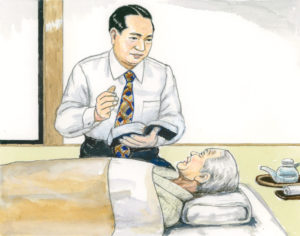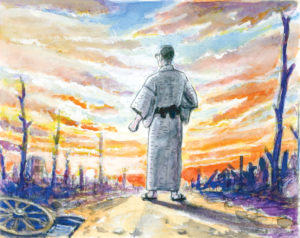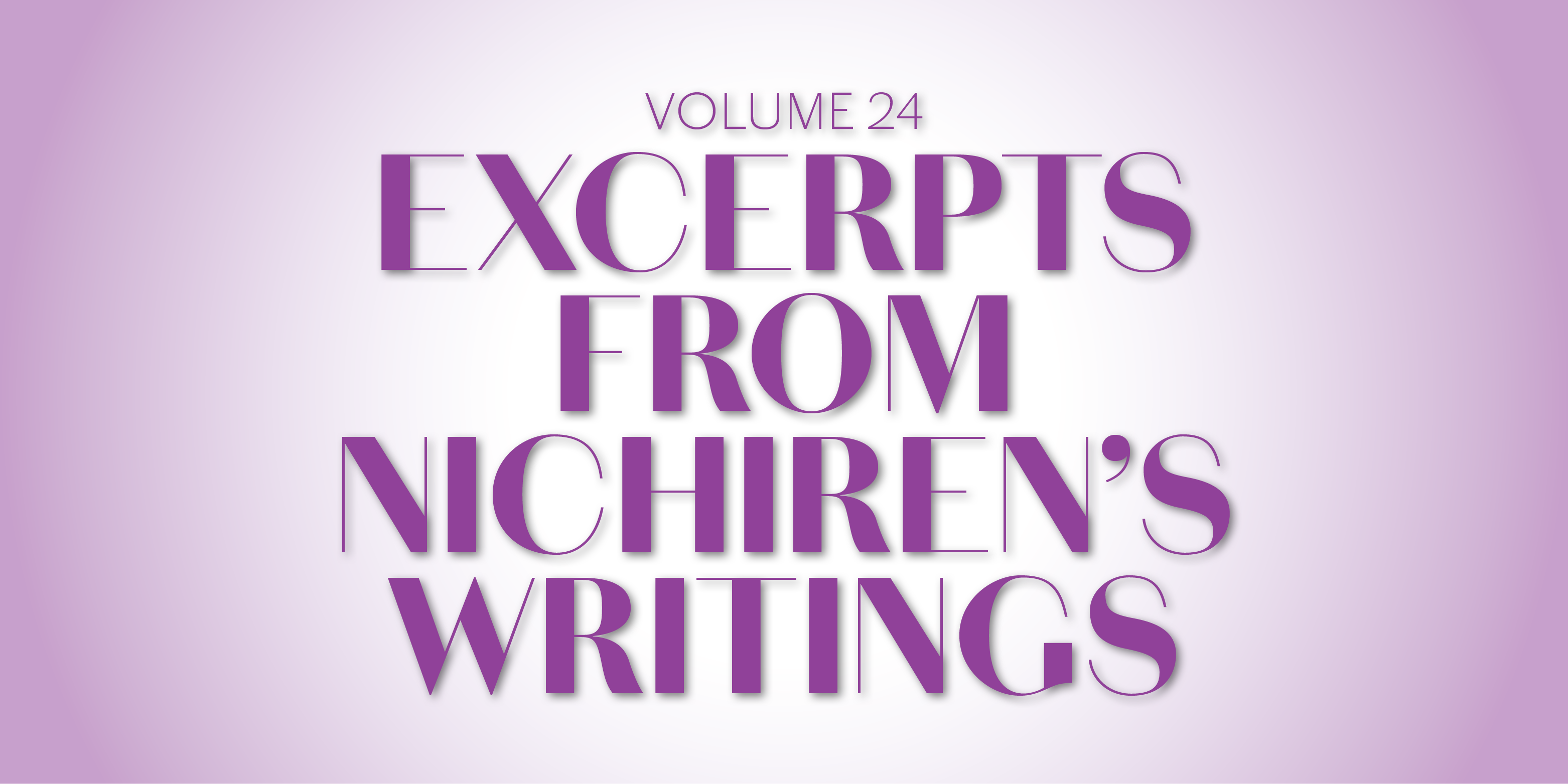This installment, published in the October 21, 2020, issue of the Seikyo Shimbun, focuses on passages from Nichiren Daishonin’s writings that Ikeda Sensei discusses in volume 24 of The New Human Revolution.
Passage 1
“When he was alive, he was a Buddha in life, and now he is a Buddha in death. He is a Buddha in both life and death. This is what is meant by that most important doctrine called attaining Buddhahood in one’s present form.” (“Hell Is the Land of Tranquil Light,” The Writings of Nichiren Daishonin, vol. 1, p. 456)
Experiencing Joy in Life and Death

Illustration courtesy of Seikyo Press.
In 1976, Shin’ichi Yamamoto visited his ailing mother, Sachi, and studied Nichiren Daishonin’s teachings together with her.
Lying in her bed, Sachi nodded, her eyes shining, as she listened to her son. It was the first and last time that Shin’ichi would ever give a lecture on Buddhism to his mother.
Though his mother had pulled out of critical condition, Shin’ichi sensed that she didn’t have long to live. That’s why he wanted to take this opportunity to speak to her about the Buddhist perspective on life and death. …
“Those who strive tirelessly for kosen-rufu are Buddhas in life. They are able to spend their days in great joy, undefeated by adversity in any form. And after they die, they become Buddhas in death. That’s the great teaching of attaining Buddhahood in one’s present form.
“Life is joy and death is joy. We can experience eternity in absolute joy.
“Chant Nam-myoho-renge-kyo to the very end of your life, making your being shine like a magnificent setting sun, imbuing everything in golden hues.”
Soka mothers, living their lives as emissaries of the Buddha, are together forever with the sun of victory and happiness throughout the three existences.
When Shin’ichi finished speaking, he took his mother’s hand, and she responded to his clasp by squeezing tightly. …
The next day, Sachi said to family members: “I’ve experienced my share of regret and suffering in life, but I’ve won. I always hoped my children would make a positive contribution to society, and one of my children has really been able to make a difference. This makes me truly happy.” (The New Human Revolution, vol. 24, pp. 44–45)
Passage 2
“At first only Nichiren chanted Nam-myoho-renge-kyo, but then two, three, and a hundred followed, chanting and teaching others.” (“The True Aspect of All Phenomena,” WND-1, 385)
The Stand-alone Spirit: A Key Principle in Advancing Kosen-rufu

Illustration courtesy of Seikyo Press.
On January 5, 1977, the third installment of Shin’ichi Yamamoto’s lecture on “The True Aspect of All Phenomenon” was published in the Seikyo Shimbun, the Soka Gakkai’s daily newspaper.
“At all times, the fundamental and unchanging principle for kosen-rufu is the stand-alone spirit. The Daishonin and Mr. Makiguchi and Mr. Toda all bravely stood up alone. …
“Concretely speaking, the stand-alone spirit in this regard means for each of us to take full responsibility for the spread of the Mystic Law in our family, in our community and in every part of our environment.
“We all have relationships with family members, relatives and friends that are particular to each of us. From the perspective of the Mystic Law, those relationships are the realm of our mission, and they are profound bonds that connect our lives with others. … That’s what makes the principle of standing up alone so important. We should keep in mind that we are here now as emissaries of Nichiren Daishonin. As Bodhisattvas of the Earth, we need to stand up, each in our own place, and take action. Never forget that this is the only way kosen-rufu is realized.”
In our daily lives, introducing others to Buddhism is a very ordinary, and at the same time, extremely challenging activity. Because those around us know us so well, pretense and bluff won’t work. The only thing is to strive diligently with honesty, sincerity, perseverance and great passion while showing actual proof. These efforts are where the true essence of our Buddhist practice lies. (NHR-24, 151–52)
You are reading {{ meterCount }} of {{ meterMax }} free premium articles

